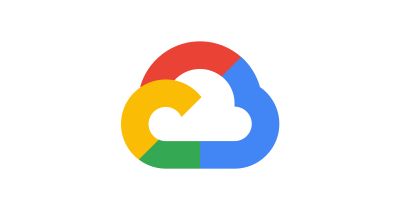Stochastic
Personalized language models for efficient deployment.
chatbot development train cloudTool Information
| Primary Task | Chatbots |
|---|---|
| Category | ai-and-machine-learning |
| Sub Categories | chatbots api-and-development-tools |
| Open Source | Yes |
| Country | United States |
Stochastic's XTURING is an open-source library that allows users to easily build and control Large Language Models (LLMs) for personalized AI applications. With XTURING, users can fine-tune LLMs with their own data and customize them using state-of-the-art, hardware-efficient algorithms.The tool aims to make deep learning acceleration easy and accessible for enterprises and individuals. By providing a simple interface, users can personalize LLMs to their specific data and application needs, enabling them to build their own personalized AI systems.XTURING offers a development tool chain that allows users to quickly build LLMs with their own data using only three lines of code. The tool focuses on hardware efficiency, enabling faster fine-tuning processes with fewer GPUs.Additionally, Stochastic's solution includes an enterprise-ready AI system that trains locally on user data and deploys on the cloud, scaling to support millions of users without the need for an engineering team. The tool also provides real-time logging and monitoring of resource utilization and cloud costs for deployed models.In summary, Stochastic's XTURING is a tool that simplifies the process of building and controlling personalized AI systems. It offers a user-friendly interface for fine-tuning LLMs, focuses on hardware efficiency, and provides enterprise-ready features such as local training, cloud deployment, and monitoring capabilities.
Stochastic is an AI technology company based in Boston, Massachusetts, founded in 2020. Operating from the Harvard Innovation Labs, Stochastic specializes in creating transparent and auditable AI systems designed for enterprise use, focusing on regulatory compliance and adaptability to specific domains.
The company offers an AI Acceleration Platform that enables businesses to build and deploy private large language models (LLMs) with proprietary optimization engines. They also provide an open-source library for fine-tuning LLMs, allowing customization without extensive engineering resources. Stochastic's solutions include real-time processing capabilities for natural text and voice interactions, ensuring low latency and context-aware conversations.
Stochastic primarily serves regulated industries such as finance, healthcare, and legal sectors, providing secure and customizable AI solutions. Their platform empowers organizations to develop competitive AI applications without relying on centralized services, promoting a no-code/low-code approach. The company is positioned as a democratizing force in AI, making advanced technology accessible to enterprises of all sizes.
| Pros |
|---|
|
| Cons |
|---|
|
Frequently Asked Questions
1. What is Stochastic's XTURING?
Stochastic's XTURING is an open-source library that lets users create and control Large Language Models (LLMs) for personalized AI applications. It offers simplified methods to fine-tune LLMs with custom data and customize them using cutting-edge, hardware-efficient algorithms.
2. How does XTURING help me build a Large Language Model?
XTURING helps in building Large Language Models by providing a simplified interface that allows the fine-tuning of LLMs with your personal data. It offers a development tool chain requiring only three lines of code for creating LLMs with your data.
3. Do I need technical expertise to use XTURING?
While having a technical background can be beneficial, XTURING is designed to be user-friendly. It simplifies the process of building and controlling personalized AI systems, requiring only three lines of code to build an LLM with your data, which suggests a minimal need for extensive coding or technical expertise.
4. What is the primary use of XTURING?
The primary use of XTURING is to simplify the construction and administration of personalized AI systems. This is achieved by providing a simple interface for fine-tuning LLMs with personal data, focusing on hardware efficiency, and offering enterprise-level features such as local training, cloud deployment, and monitoring capabilities.
5. What does it mean that XTURING focuses on hardware efficiency?
Focusing on hardware efficiency means that XTURING utilizes state-of-the-art algorithms that are optimized to reduce the amount of computational resources, like GPUs, required for model fine-tuning. This leads to faster processing times and reduced costs.
6. Do I need to have my own data to fine-tune models using XTURING?
Yes, you do need to have your own data to fine-tune models using XTURING. The platform emphasizes personalization and allows users to tune LLMs using their own datasets, which enables the creation of highly individualized AI applications.
7. How do I customize my Large Language Models with XTURING?
You customize your Large Language Models with XTURING by using the provided interface to personalize models with your own data. Additionally, XTURING employs advanced, hardware-efficient algorithms which can be used to adjust the LLMs to your specific needs.
8. How does XTURING make deep learning acceleration easy?
XTURING makes deep learning acceleration easy by offering a user-friendly interface and a development tool chain that lets users to quickly create LLMs. Moreover, it employs hardware-efficient algorithms that enable faster fine-tuning which results in decreased utilization and lower cost.
9. Can XTURING train models locally on my own data?
Yes, XTURING can train models locally on your own data. It provides an enterprise-ready AI system that trains on user data locally before deploying on the cloud, maintaining data security and efficiency.
10. How does XTURING deploy these models in the cloud?
XTURING deploys models in the cloud as part of its enterprise-ready AI system. While specifics are not detailed, it's implied that this service is designed to scale and support millions of users without the necessity of an engineering team, suggesting a largely automated and streamlined deployment process.
11. Can XTURING handle large user volumes?
Yes, XTURING can handle large user volumes. The tool scales to support millions of users, implying it has high scalability and performance capabilities to meet the requirements of both enterprise-level applications and individual users.
12. Does XTURING offer real-time logging and cloud cost monitoring?
Yes, XTURING does offer real-time logging and cloud cost monitoring. The service provides tracking of resource utilization and expenditure on cloud deployment of models, allowing users to maintain oversight of their application performance and costs.
13. Is there a limit on the number of GPUs I can deploy my LLMs on with XTURING?
The information provided does not specify an upper limit on the number of GPUs that can be used to deploy LLMs with XTURING. The focus is on hardware-efficiency, which suggests that the tool is designed to maximize performance even when working with a limited number of GPUs.
14. What is the role of XTURING in building a personalized AI system?
XTURING plays a crucial role in building a personalized AI system by enabling easy creation and control of LLMs. It allows for fine-tuning of these models with personal data, delivering a unique AI setup. Moreover, it also offers cloud deployment, and real-time logging and monitoring, bundling all necessary features for building a personalized AI system into a single platform.
15. What are the three lines of code required to build an LLM with XTURING?
The specific three lines of code required to build an LLM with XTURING are not provided. However, XTURING emphasizes a simplified interface and process, requiring only three coding lines for constructing LLMs, emphasizing the tool's user-friendliness and efficiency.
16. How can enterprises benefit from using XTURING?
Enterprises can benefit from using XTURING by leveraging it to create personalized AI systems. Its features like local training, cloud deployment, real-time logging, monitoring capabilities, and ability to scale effectively to handle large volumes of users, make it beneficial for enterprise-level applications, even without a dedicated engineering team.
17. What are some examples of AI systems I can build using XTURING?
With XTURING, you can build various types of AI systems. The examples provided include XMAGIC, a personal AI assistant for answering questions on your files, generating summaries, reports, emails, and automating your workflows, and XFINANCE, a domain-specific LLM trained on open-source financial data.
18. Why are hardware-efficient algorithms important in fine-tuning LLMs?
Hardware-efficient algorithms are important in fine-tuning LLMs because they reduce the compute resources required, leading to faster processing times and lower GPU usage. This efficiency not only cuts costs but also speeds up the whole AI development process, contributing to faster turnaround times and reduced expenditure on hardware.
19. Can XTURING speed up the model training process?
Yes, XTURING can speed up the model training process. By employing hardware-efficient algorithms, it can facilitate faster fine-tuning processes within a limited number of GPUs, essentially accelerating the overall model training process.
20. Is XTURING available as an open-source library?
Yes, XTURING is available as an open-source library. This means that it is publicly accessible and can be freely used and modified by users, providing a flexible and cost-effective tool for building and controlling personalized LLMs.
Comments
Similar Tools
Related News

Apple is reportedly taking a significant step towards revitalizing its long-struggling virtual assistant, Siri, by deploying an...
@devadigax | Sep 28, 2025

A new contender in the social media landscape, Neon, has rocketed to the number two spot on the Apple App Store, not by revolut...
@devadigax | Sep 24, 2025

Meta, the parent company of Facebook, is injecting artificial intelligence into its dating app, aiming to streamline the often ...
@devadigax | Sep 22, 2025

Google Cloud, once considered a distant third in the cloud computing race, is rapidly gaining ground, becoming one of Alphabet'...
@devadigax | Sep 18, 2025

The age of artificial intelligence is rapidly evolving, moving beyond the realm of text-based chatbots and virtual assistants. ...
@devadigax | Sep 18, 2025

Microsoft is dramatically boosting the AI capabilities of its popular collaboration platform, Microsoft Teams, with the rollout...
@devadigax | Sep 18, 2025
 AI Tool Buzz
AI Tool Buzz
 Voiceglow
Voiceglow